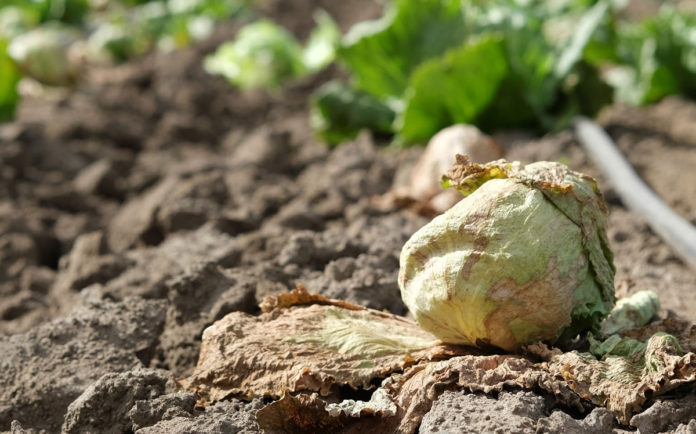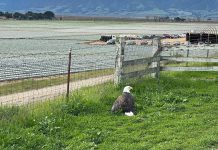
SALINAS VALLEY — Monterey County has enacted a mandatory abatement program for select weeds as part of an effort to contain the impatiens necrotic spot virus, or INSV, which has severely impacted the region’s lettuce crop in recent years.
Officials are urging residents who notice any of the 10 most important weed hosts of the virus growing near lettuce production areas to report the sighting to the county agricultural commissioner.
The agricultural commissioner will investigate the sighting. If inspectors find one of the 10 suspect weeds, the virus and the insects that vector it, they will serve the property owner with notice to abate the nuisance.
“If the property owner doesn’t abate the weeds, the agricultural commissioner can abate the weed and bill the owner,” said Hannah Wallis, a Monterey County agricultural programs biologist.
Wallis discussed the ongoing weed abatement program during a pest management meeting held by the University of California Cooperative Extension in Salinas in December.
Monterey County farmers in 2022 suffered an estimated $150 million in crop losses as INSV, which is spread by thrips, moved from field to field in the Salinas Valley.
The county normally harvests 100,000 acres of lettuce valued at $1.2 billion. Last year, exceptionally wet and cold conditions from atmospheric river storms resulted in a dramatic reduction in INSV infections. But lettuce growers suffered an additional $54.4 million in losses from the storms.
INSV on lettuce causes yellowing and stunting and can make the crop unfit for market. Management is difficult because the virus has hundreds of crop and weed hosts and is easily spread by western flower thrips after they feed on an infected plant.
The 10 suspect weeds on the zero-tolerance list are common purslane, lambsquarter, field bindweed, shepherd’s purse, nettleleaf goosefoot, hairy fleabane, annual sowthistle, malva and burning nettle.
In a statement, the agricultural commissioner’s office said, “Getting rid of these 10 plants in non-crop areas near lettuce production is critical to protect next year’s lettuce crop from INSV.”
The most critical time to control the weeds is during the lettuce-free period adopted decades ago to manage lettuce mosaic virus.
The period from Dec. 7 to Dec. 21 — when no lettuce can be aboveground in the county — has been enough to control another lettuce threat, the mosaic virus. But INSV remains a concern due to its ability to spread from host weeds commonly found in Monterey County.
“The best thing we can do to minimize INSV is to take advantage of the lettuce-free period to control weed hosts,” Wallis said.
Fourteen reports of the weeds have been made to the agricultural commissioner’s office in 2023, and all of them have been resolved voluntarily. Some of the sightings have been on ground owned by Monterey County, the cities of Salinas and Gonzales, Caltrans and Union Pacific, officials said.
While INSV has been widespread in the Salinas Valley in recent years, sometimes with severe impact, it has been relatively mild in 2023.
“We’ve had very little INSV this year,” said Jennifer Clarke, California Leafy Greens Research program executive director. “This is probably due to our cold, wet winter and cool summer.”
This virus was first detected on Central Coast lettuce in 2006. Since 2018 it has frequently destroyed entire fields of the crop. Weed control and research to develop varieties with genetic resistance may be key to long-term management.
Researchers from the UC and the U.S. Department of Agriculture are working with lettuce growers on crop breeding trials aimed at diminishing the threat.
“Genetic resistance is the most economical and environmentally sound control method,” the USDA Agricultural Research Service reported in a research summary, “but only partial resistance to INSV has been identified.”
Bob Johnson is a reporter in Monterey County. He may be contacted at bj********@***il.com. Article courtesy of the California Farm Bureau Federation.













